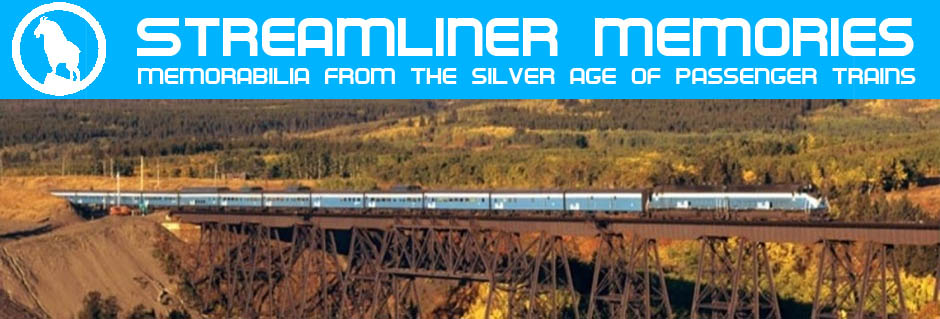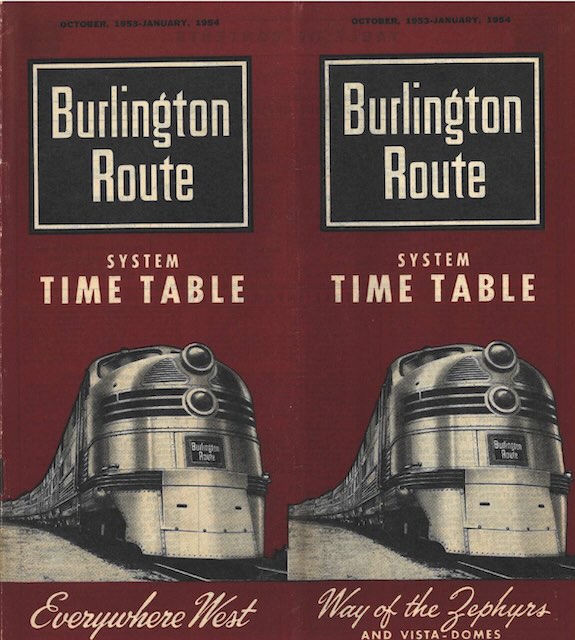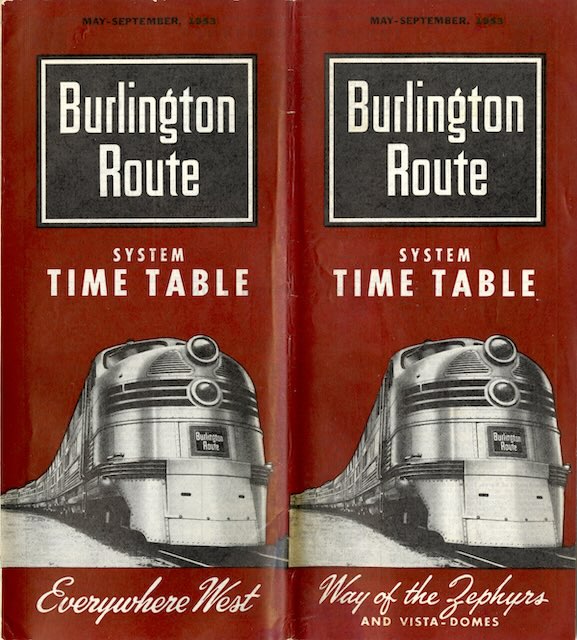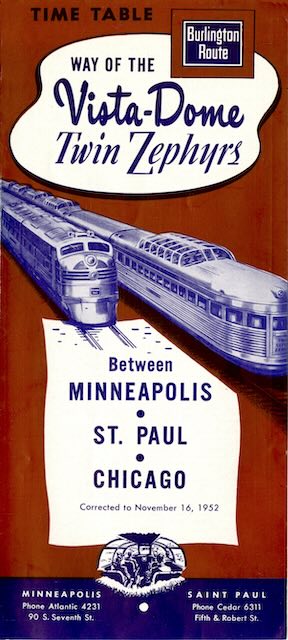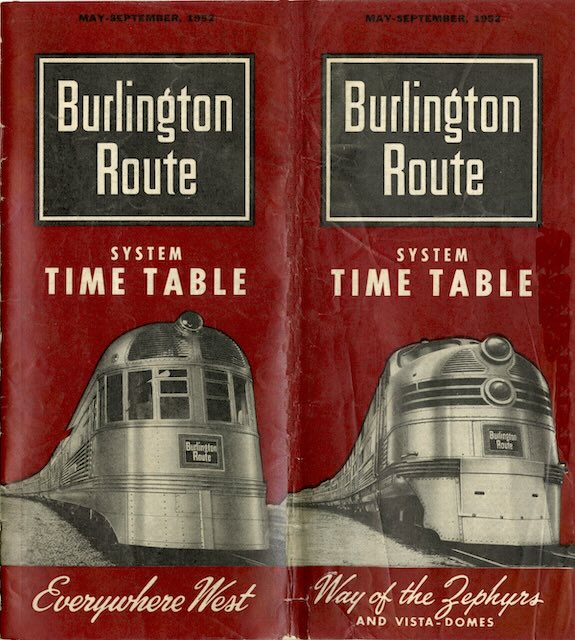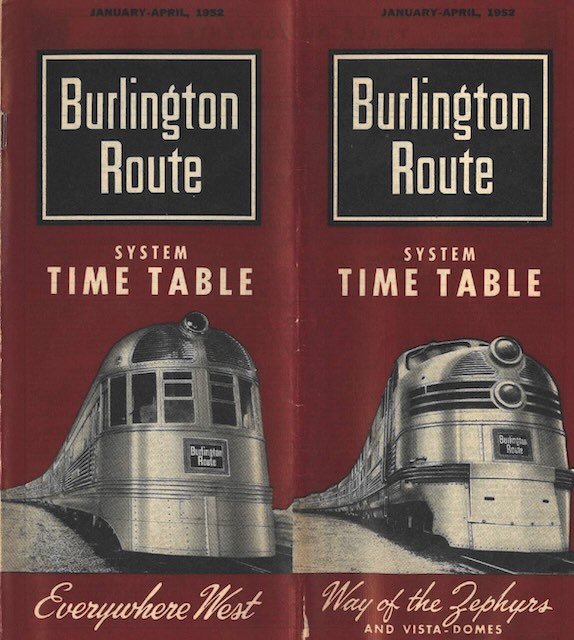This timetable makes a curious change in format. As mentioned yesterday, previous timetables had devoted page 6 to condensed schedules for the California Zephyr and the Kansas City-Billings train. In all, the earlier timetables had 6-1/2 pages of condensed schedules, with the remaining half page used for an ad.
 Click image to download a 21.5-MB PDF of this 36-page timetable.
Click image to download a 21.5-MB PDF of this 36-page timetable.
Today’s timetable rearranges the condensed schedules so that the Kansas City-Billings train is on page 9. This moves the other schedules around, losing the half-page ad. That left all of page 6 for the California Zephyr condensed schedule, which allowed for larger type but also a lot of white space on that page. Continue reading
